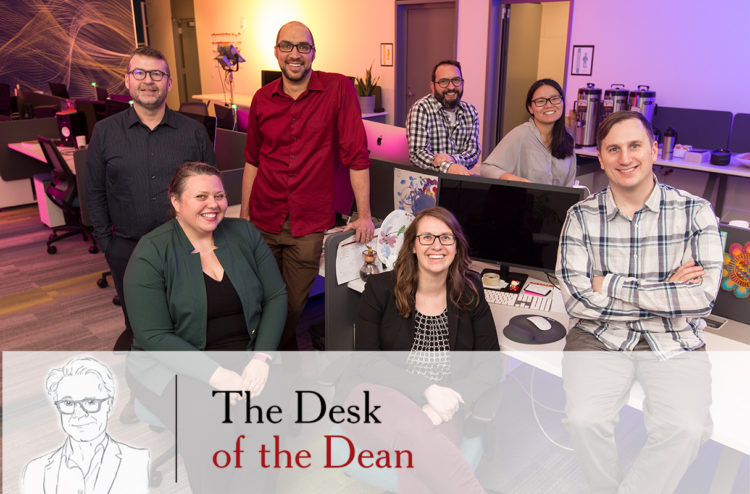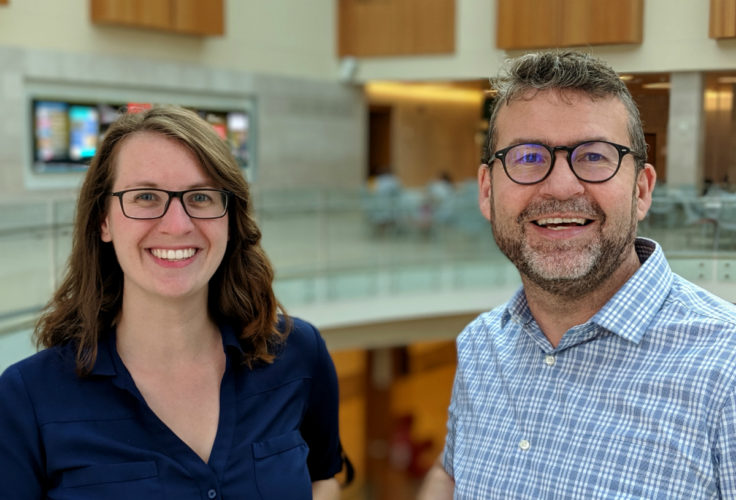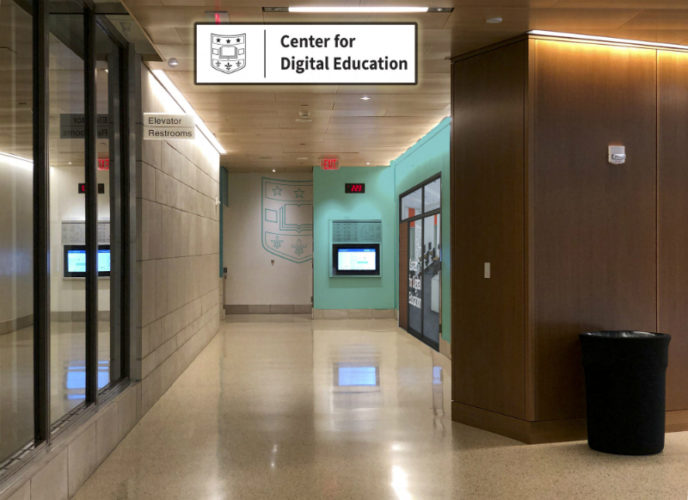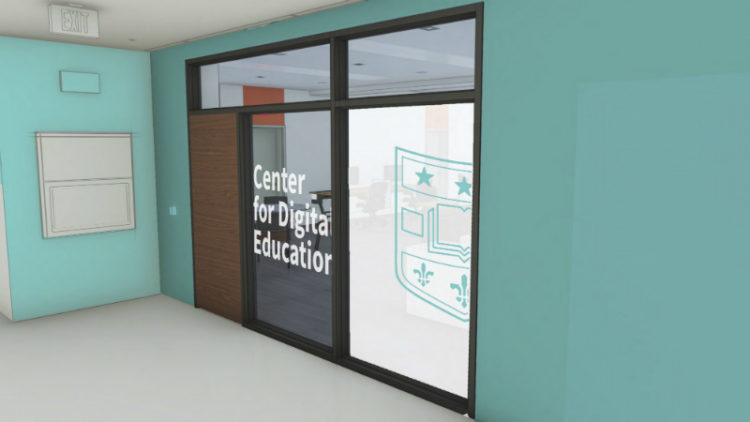In December 2018, I reflected in this very column on our plans to bring WashU Olin into a digital space—investing in virtual, online learning experiences. Mere months later, we welcomed Ray Irving and Nina Kim, who built a team and launched our state-of-the-art Center for Digital Learning in the fall.
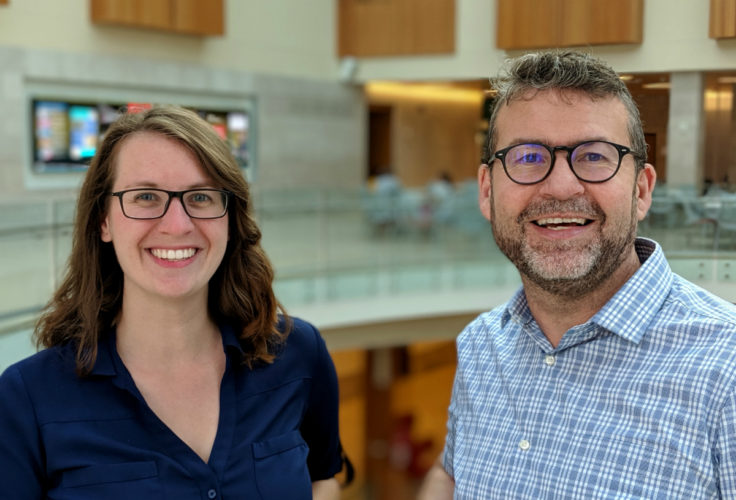
Neither Ray nor Nina nor I could have imagined just how essential their services would become—and how urgently they’d be needed. Not even a semester past the CDE’s launch, the coronavirus pandemic forced a full migration into virtual classrooms.
Our world-class faculty, staff and students have been dynamic and resilient in this unprecedented situation.
“We had always planned to engage faculty in developing online sessions,” said Ray, the CDE’s director. “But that plan had been based on a more gradual transition over the next 12 months—not 200-plus faculty and staff in 10 days.”
When Ray and Nina signed on at Olin, no one could have anticipated a global pandemic that would empty university campuses around the world. But Ray and Nina—and the stellar team that they have recruited, including instructional designers such as Kella Thornton—have leapt into action to provide crucial faculty and staff support and training in online learning at this critical time.

“Although online learning is new to Olin, it’s not new to Nina, Kella or myself,” Ray said. The urgency to deliver online learning support was. The CDE team moved hundreds of faculty and staff—many of whom had never used platforms such as Zoom—into a fully digital classroom environment.
“This was an all-hands-on-deck situation,” said Nina, the CDE’s assistant director.
Indeed, it was. Almost immediately, the CDE created collaboration resources with the faculty administration team to ensure a smooth transition for students, instructors and staff. The team scheduled training meetings, created a training program from scratch and provided the necessary resources for faculty, staff and students to remain connected—wherever they might be.
“We fully understand this is the worst possible circumstances,” Ray said, “but we were determined to play the hand that was in front of us.”
They have more than delivered. I’m immensely proud of this team, and of our community’s ability to pull together in this extraordinary moment. More than simply creating an environment where online learning is possible, Ray, Nina and their team—along with our outstanding faculty and staff—have provided the space for our school to truly thrive in difficult times.
“We have heard from multiple students,” said Ashley Macrander, associate dean and director of graduate student services. “They say they are truly enjoying the online classes and think everything has gone very well.”
I’m grateful as well for the teamwork and collaboration the CDE has received from the faculty. “The faculty have been amazing,” Ray said. “They have simply got on with the task in hand, worked with us and made this happen—in extremely short order. I guess that’s what you’d expect of world-class faculty but it’s been truly remarkable to see this happen in real time.”
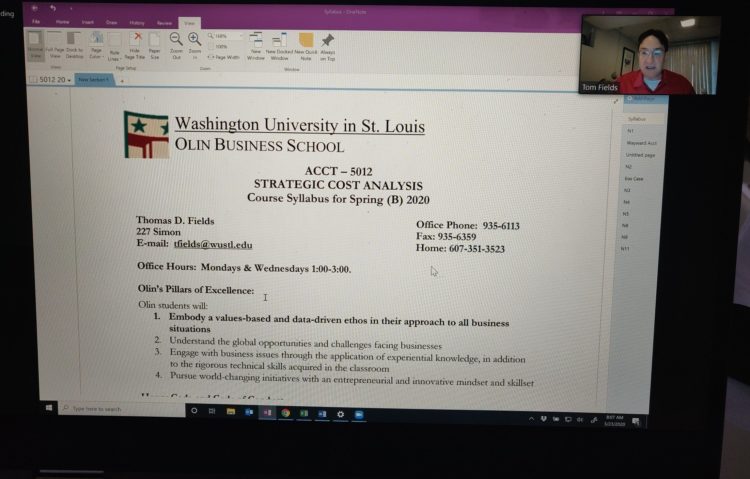
In fact, faculty have banded together on their own, creating a faculty learning group spearheaded by Andrew Knight, professor of organizational behavior. That group suggests new and innovative ways to use Zoom features as well as soliciting support and feedback from students, many of whom are technology experts and are gracious in sharing their insights.
Ten days after moving seamlessly into our new way of teaching, I’m proud to say we have 115 faculty teaching 230 classes across numerous time zones to many hundreds of students. We are ensuring that our students will continue to receive world-class education until such time as we can safely bring them back to campus.
I’m grateful for the foresight of our senior leadership team and the National Council for providing the resources and the talent to assemble the CDE. Most of all, I am grateful for the way the faculty, students and staff have rallied together.
We are getting through this like the world-class school that we are.
Pictured at top: Center for Digital Education team. Back row, left to right: Ray Irving, Wes Murrell, Shawn Bell, Emily Furst; Front row, left to right: Kella Thornton, Nina Kim, Charlie Drexler


